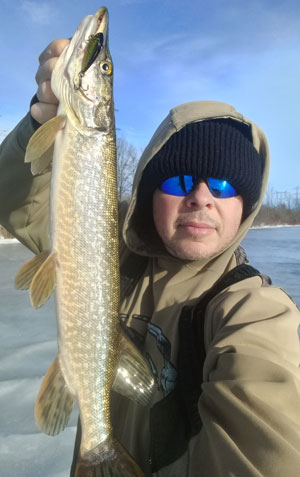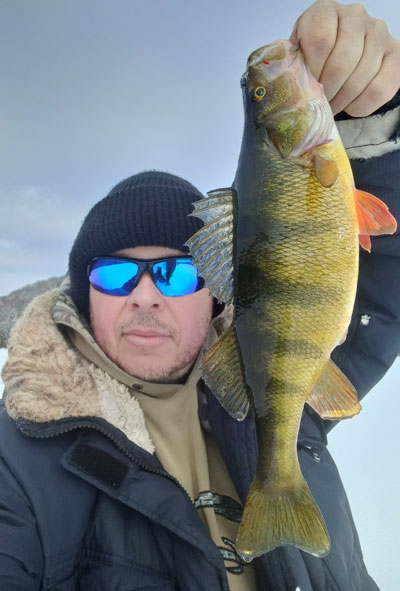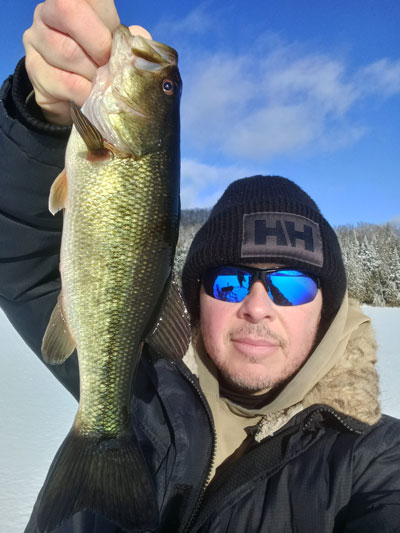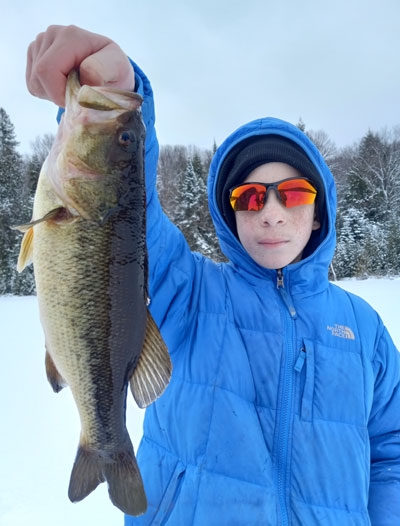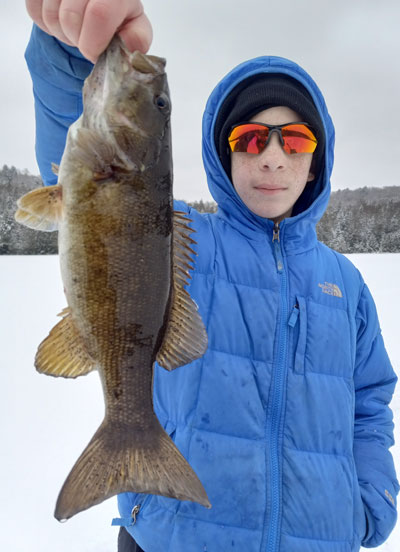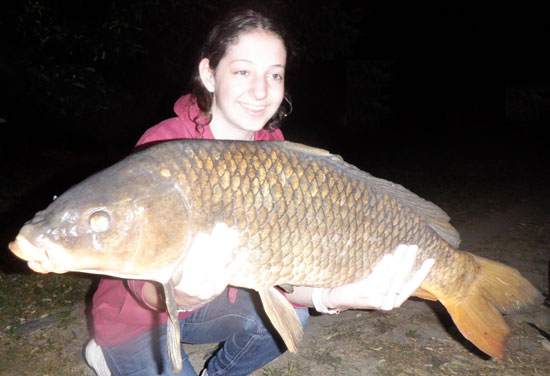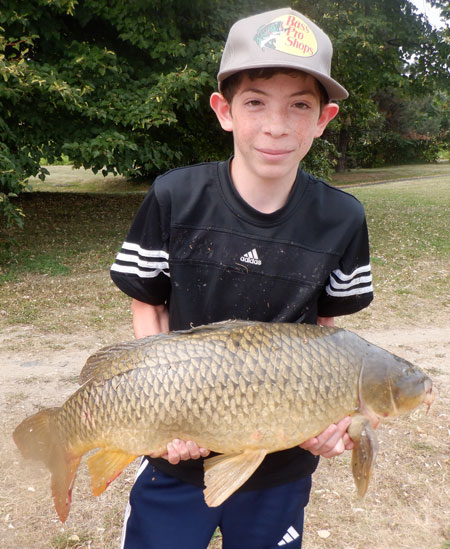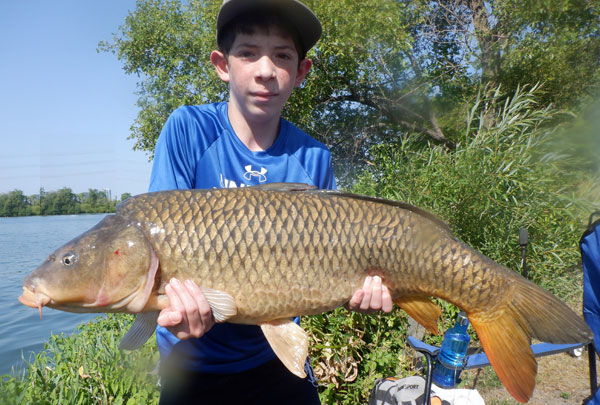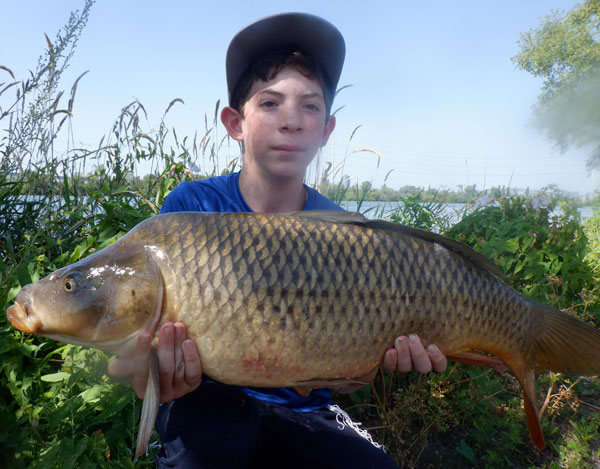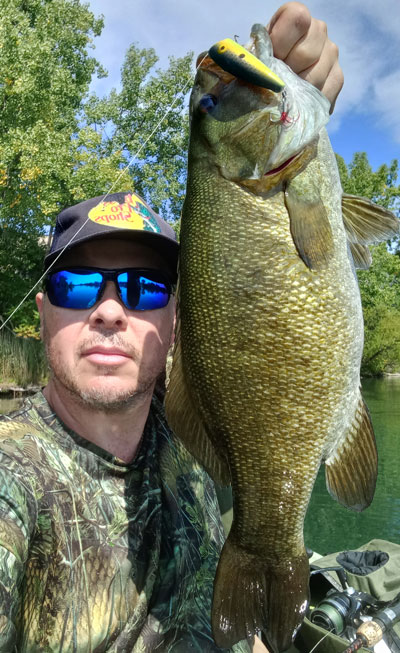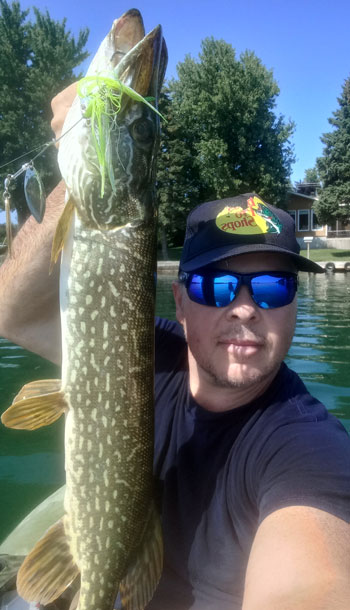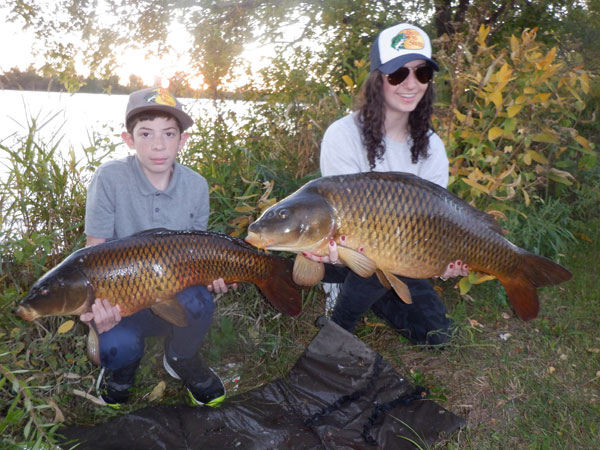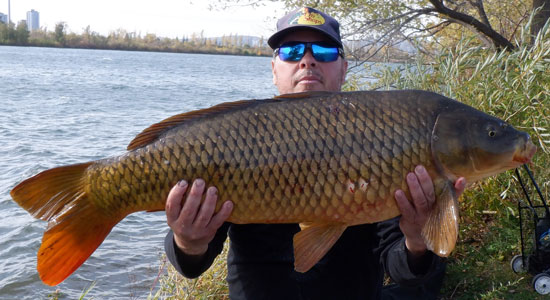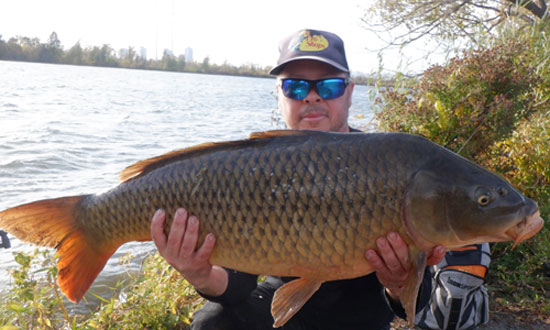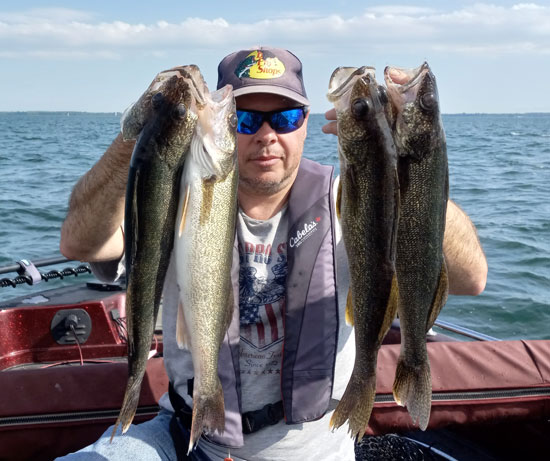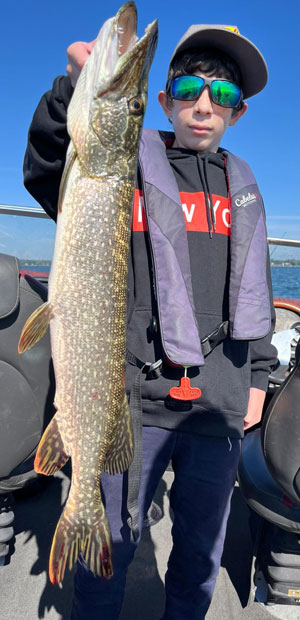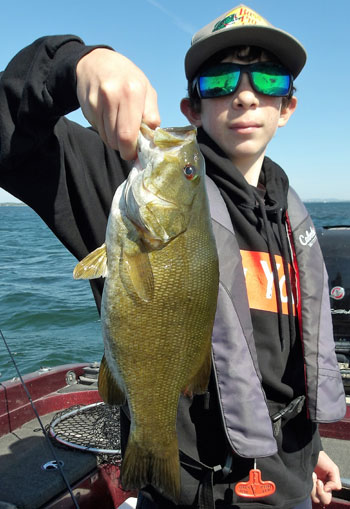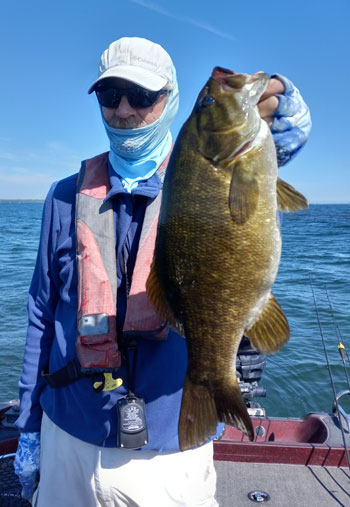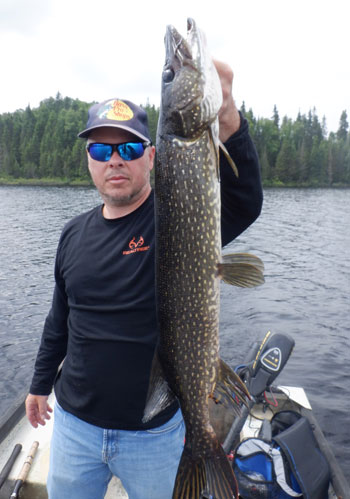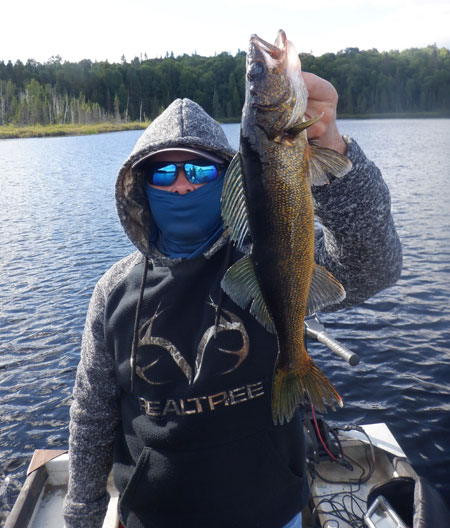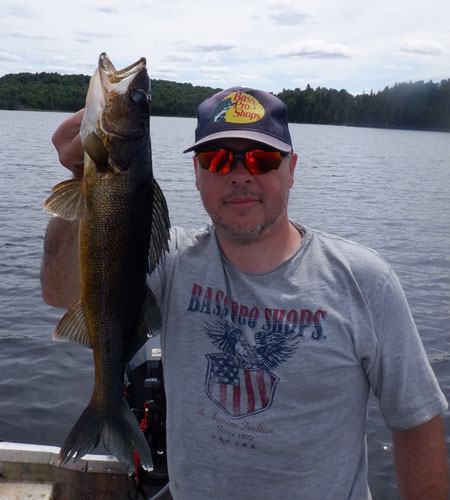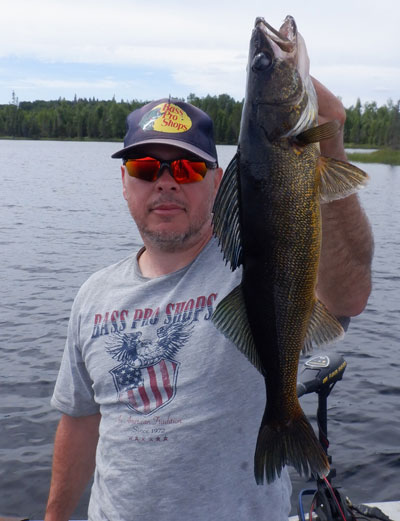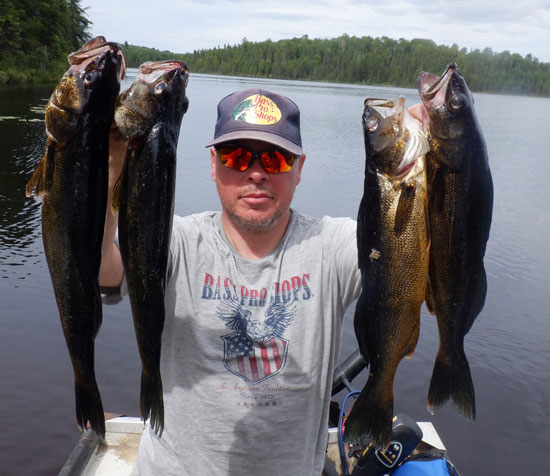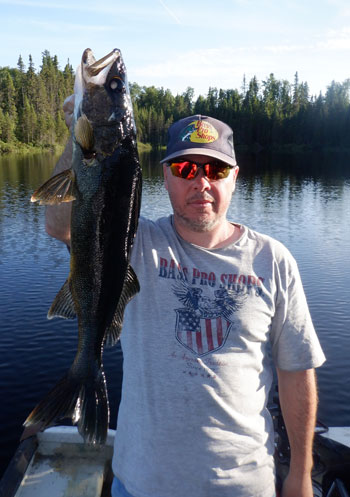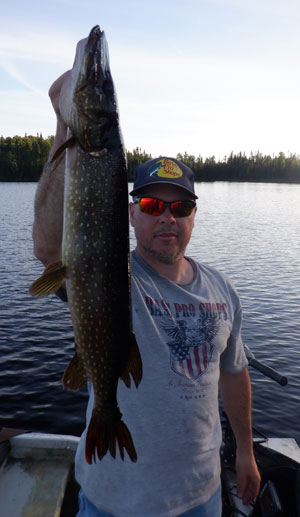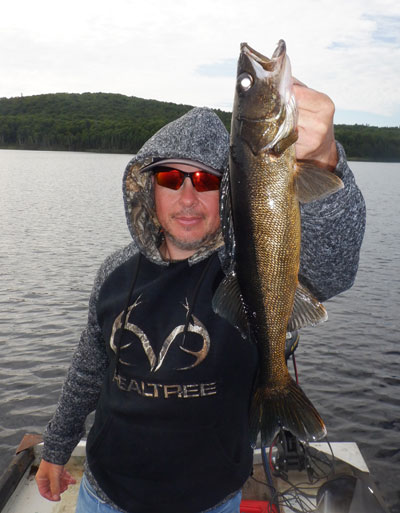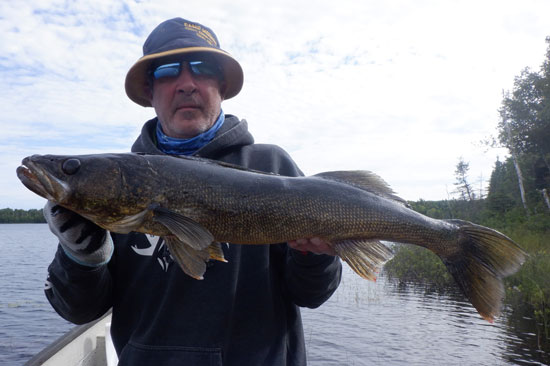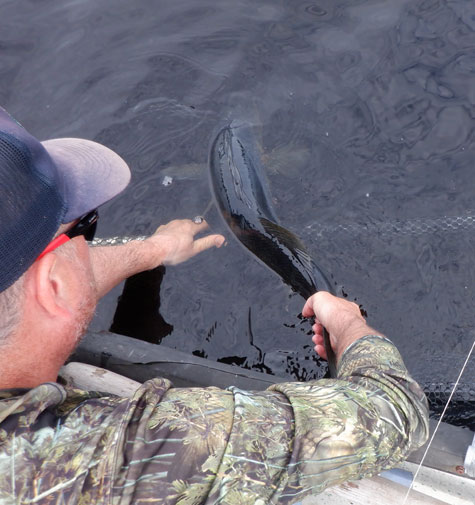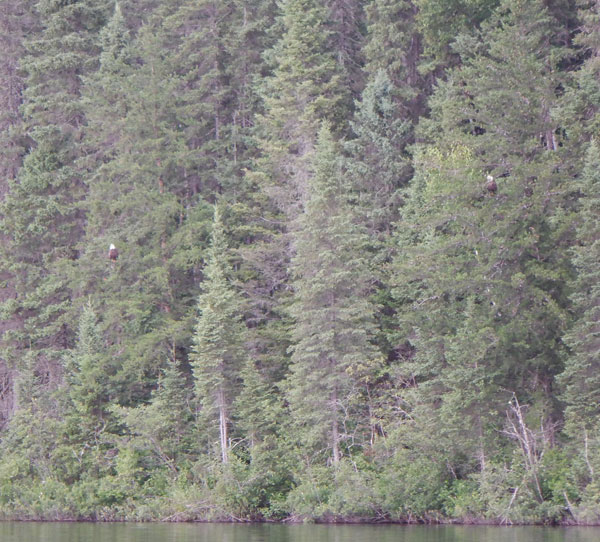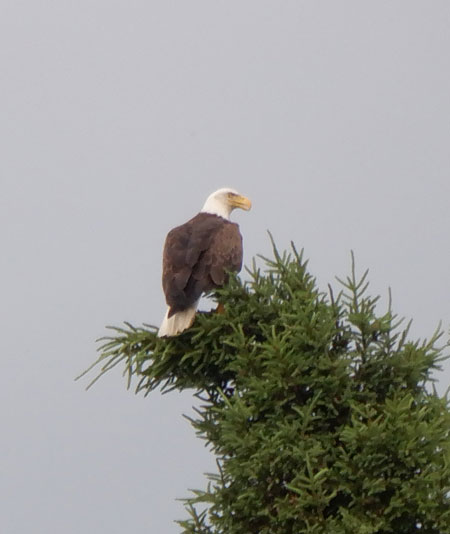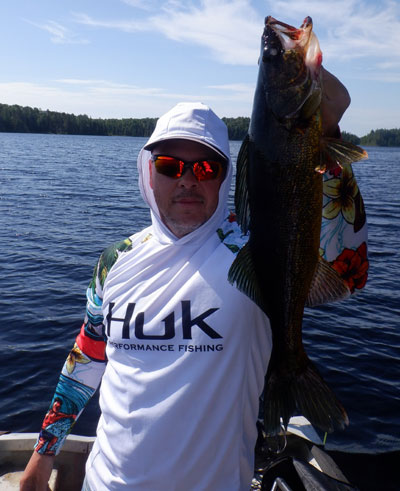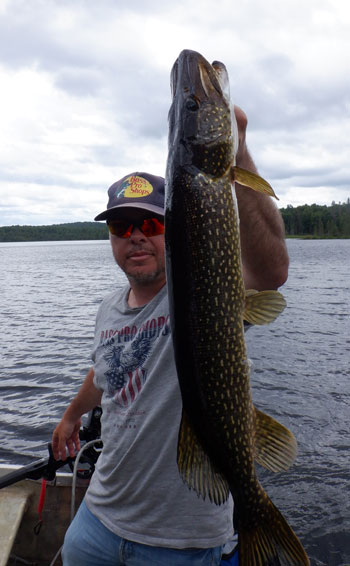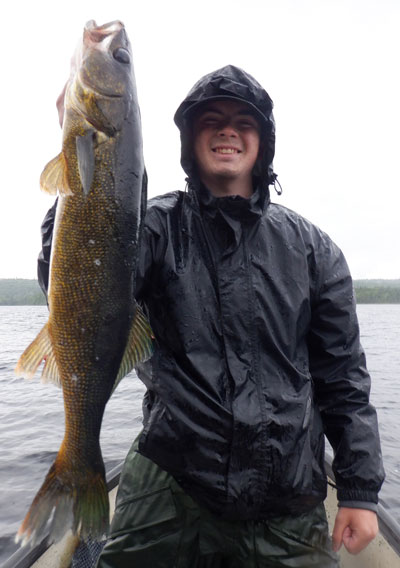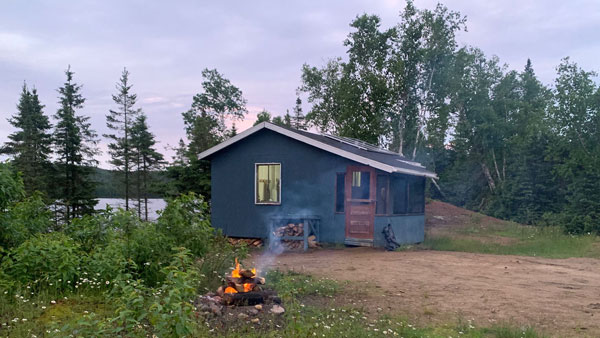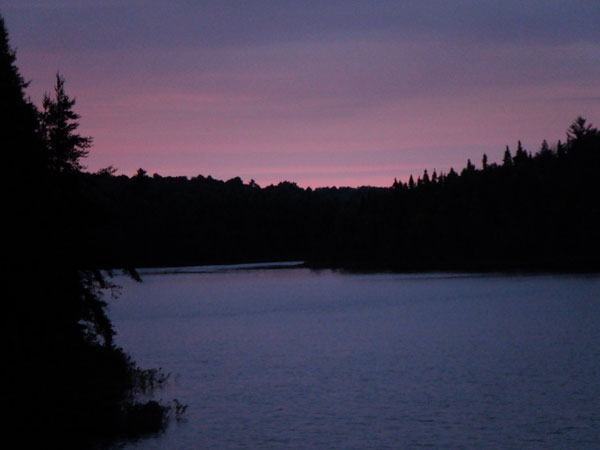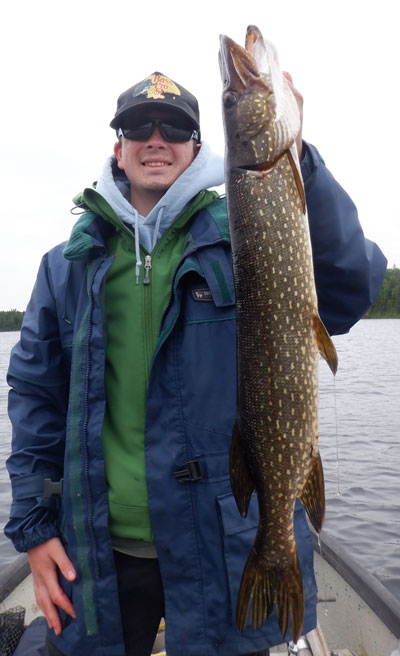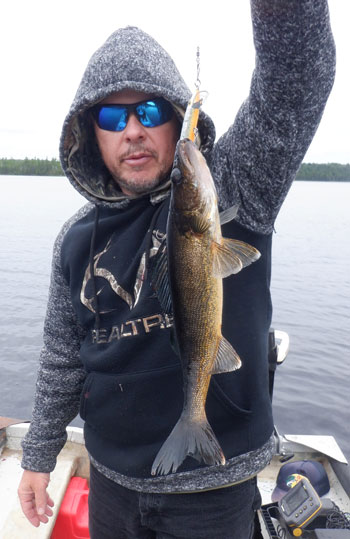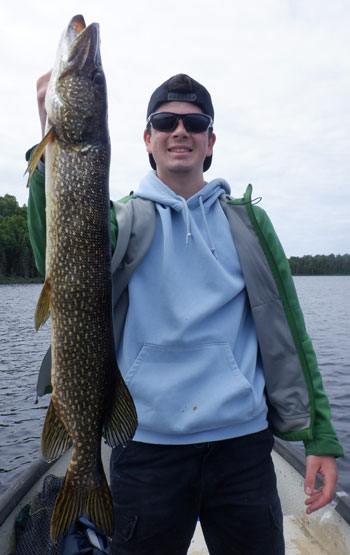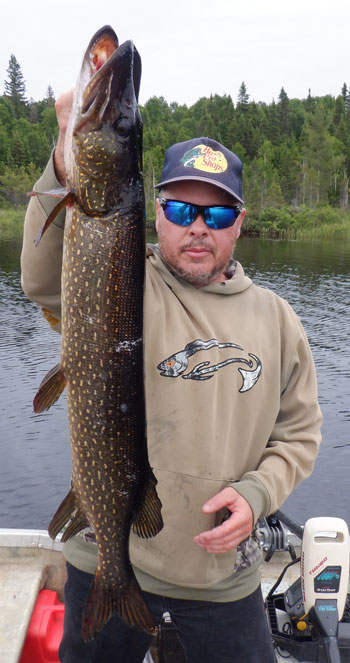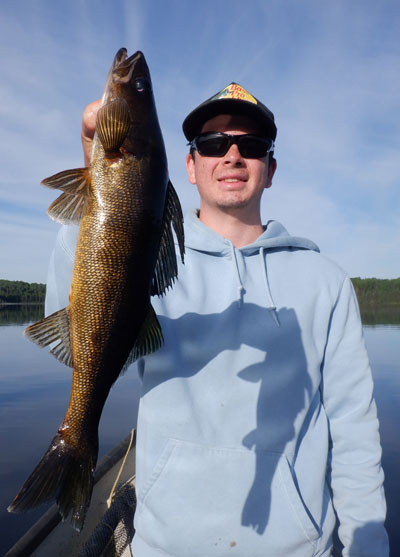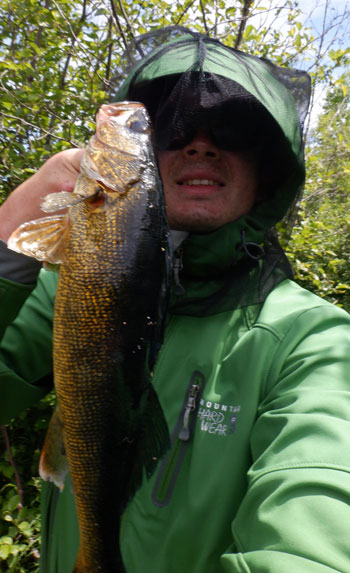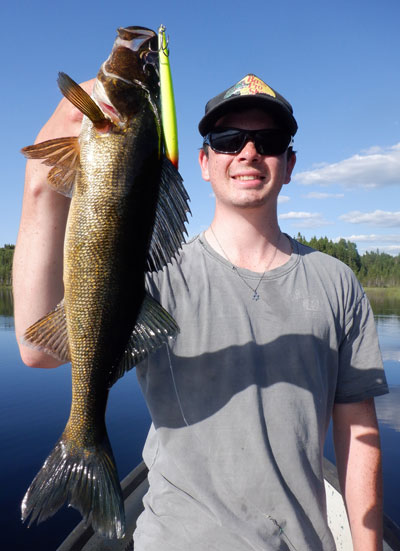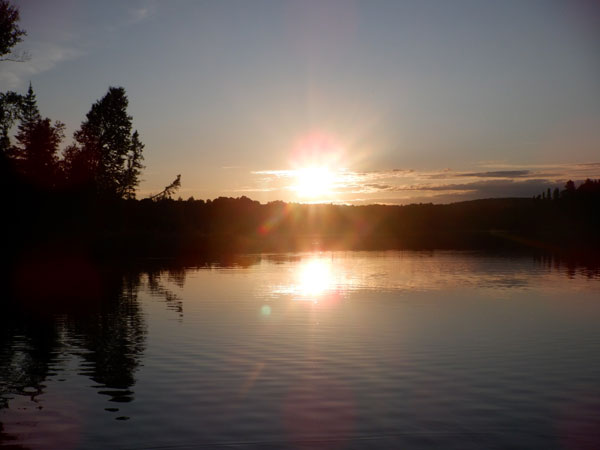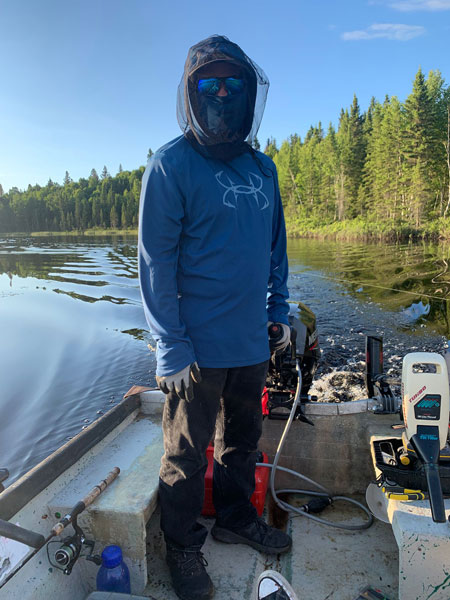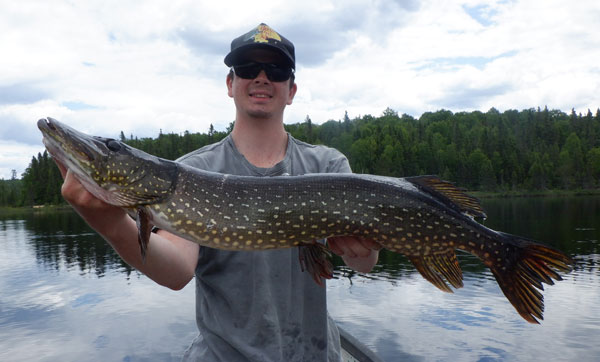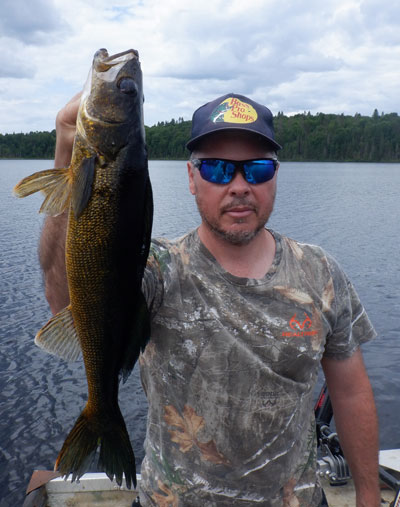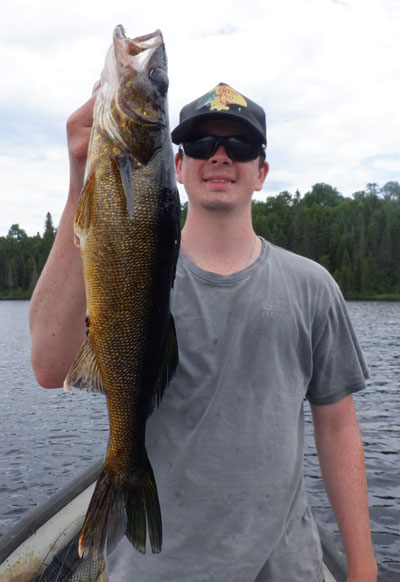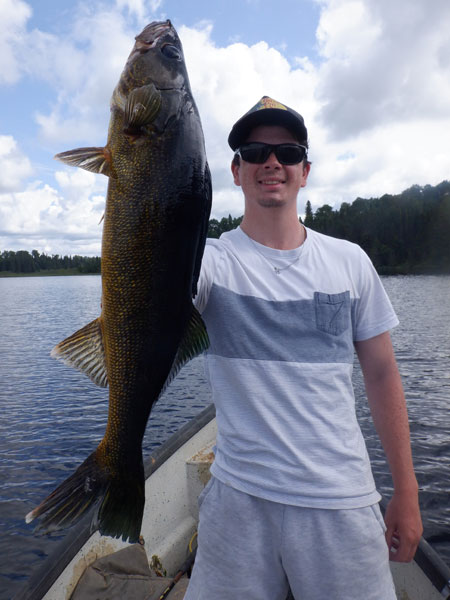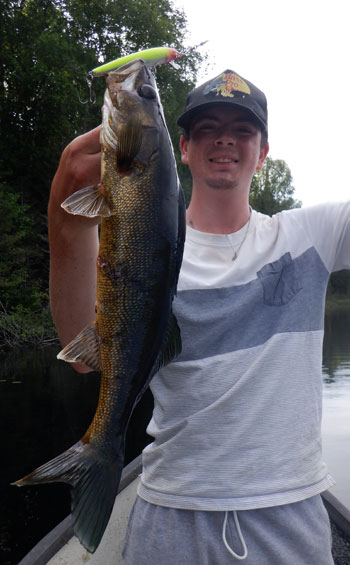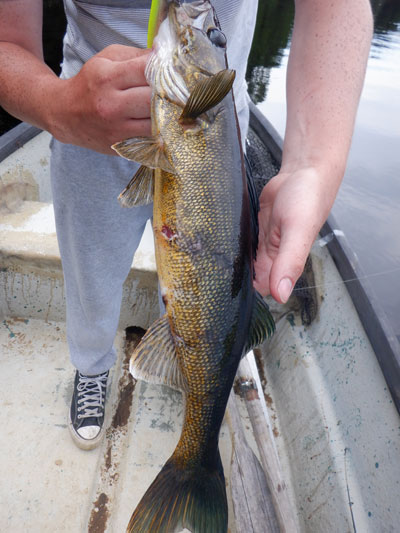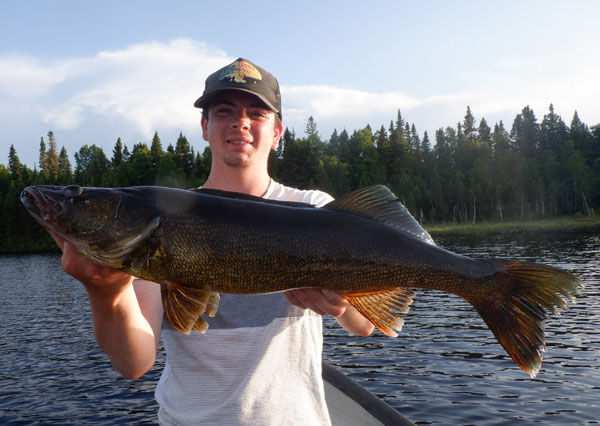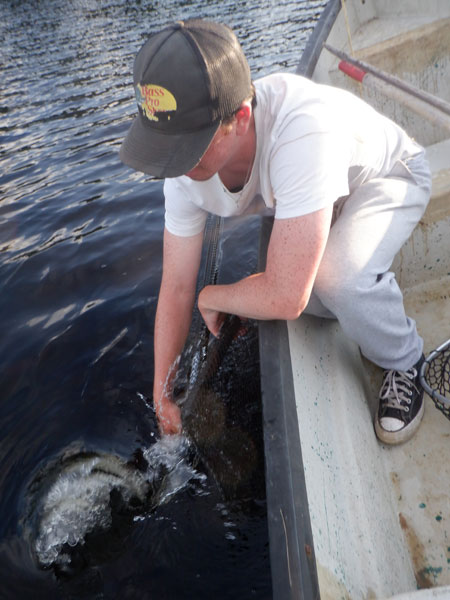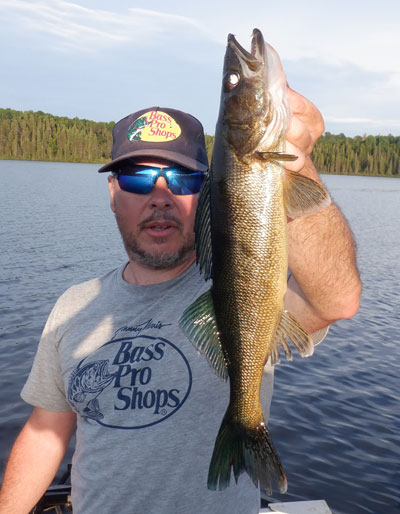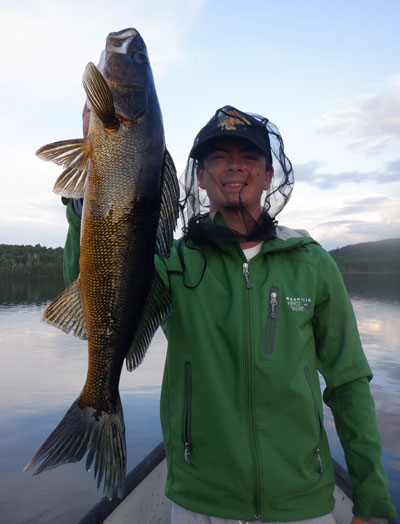Finally made it back to Le Domaine Shannon for the first of 2 scheduled trips to Lac Wahoo this July. For this trip, I took my son Eli along. He'd been dreaming of coming back there since his last trip to Lac Wahoo with me in 2022.
Having previously fished Lac Wahoo during 11 trips there since 2012, I figured that I've spent enough time to know what to expect on a 5 day July fishing trip there. Namely, lots of smaller pike, maybe a few eating sized ones, along with a shot at one or two big pike in the 35 to 40 inch range. Possibly a few walleye caught trolling on a cloudy or rainy day too.
I couldn't have been more wrong....
Day 1:
With heavy rain in the forecast for the entire day, we didn't bother driving through the night as we normally would. We arrived at the cabin around 1:30 PM after check in at the main camp. Unloaded the car, set up the gear, but held off launching in the rain. Instead, we chose to put on our rain suits and bugproof gear to do some shore fishing, hoping to possibly hook into some walleye or pike. Our short outing didn't work out as planned, but we did land a few fallfish. First time Eli's ever caught one.
By 4 pm, the rain let up a bit, so we got the boat setup with our sonar, rod holders, landing net, and new cradle for releasing bigger fish, which I was hoping to break in on this trip. As usual, my plan was to troll 2 rods, letting Eli fight any hooked fish, while I controlled the boat and landing gear if needed.
The troll started off as planned, using 2 Rapala Husky Jerks, #12 and #14 sizes. Eli landed a small pike within the first 5 to 10 minutes. Didn't bother with a picture. After another hour or so without any hits, we hooked into a bigger fish, and given the fact that it was still raining, we weren't too surprised that it was a walleye. However, it was much bigger than the average walleye for LacWahoo. A 22.5 inches, it was over the allowable slot size.
Shortly after, we landed another smaller walleye, and then, nothing else until we called it a day around 8 pm. The rain had finally stopped, and with the setting sun peaking though the clouds, we enjoyed a nice bonfire bbq dinner with a unique view of the lake.
Day 2:
We woke up to a cold, windy day, with heavy cloud cover. We got a later start after morning prayers and breakfast. I was wearing 2 sweaters, while Eli wore 3 to keep warm. After trolling unsuccessfully for a while, we decided to cast on of my hot spots for pike. Eli landed 3 pike within a few minutes, with our first keeper sized fish of the trip.
We decided to cast another area with the husky jerks, and caught a decent mix of walleye and smaller pike.
After a few drifts and enough walleye for a big dinner, we motored back up the spot for another pass. I suggested Eli leaving his line in the water close to the boat, sort of how one would troll a "prop wash" line for muskies. Sure enough, just as I stopped the boat, Eli got hit by another long pike.
After the casting bite slowed down, we headed back for lunch. That afternoon, we tried trolling different lures. At some point, the spinner we trolled on one of the rods caused too much line twist, so Eli was handling that rod while trolling the bare line to remove correct it. We got up a bit shallow, so I lifted the other rod, which was trolling a red and white spoon. Sure enough, I got a nice hit while holding the rod, so I decided to fight the fish myself. It ended up being my biggest pike of the trip, in the 31-32 inch range.
I was happy enough, and got to try using our new release cradle for the first time as an added bonus.
The day ended with us catching 10 pike and 5 walleye.
Day 3:
We finally woke up to sunny skies and a flat mirror like lake with no wind. Perfect condition to head out and cast some topwater lures for the morning bite for pike. Or so we thought...
No matter what we tried to cast or troll, the pike weren't cooperating with our plans. Heading back to where we caught some walleye the previous day, Eli landed another keeper sized fish.
After lunch, we decided to do some more shore fishing before heading out on the boat again. Eli managed another keeper sized walleye.
After some more very slow trolling action, We planned on more casting. None of the spots we normally fish were producing, and eventually, I went into a small bay, where I've never managed to hook anything. Sure enough, Eli hooked into another keeper sized walleye.
Working the shoreline out to the main section of the lake from that bay, Eli and I started catching walleye after walleye, a mix of keepers and undersized fish. We ended the day with a total of 2 pike, and a whopping 16 walleyes. Way better than we've ever managed on Lac Wahoo. We enjoyed another nice sunset on the back end of the lake before calling it a day.
Black flies tend to be horrendous at that time. Leaving no skin exposed keeps them from biting, so appropriate clothing, gloves, and bug nets are in order.
Day 4:
Another gorgeous morning, we got started bright and early. Despite the seemingly perfect conditions, we spent the first half of the day with not a fish in sight no matter what we tried. Very odd for what we are used to when fishing there. We knew that the fish were bound to start feeding at some point, and after a late lunch, we headed out for the afternoon session just as the clouds started rolling and and the wind picking up. We started off trolling, and sure enough, we got with within a few minutes. Eli landed his biggest pike of the trip, another cradle worthy fish.
We kept trolling, and eventually came up to an area with a shallow hump. as we both lifted the rods to avoid snagging bottom, I git hit by a nice walleye.
Having had some decent walleye casting around that hump during previous trips, we made a few casting passes, and landed a few more.
We eventually got hungry enough to leave the good bite, and Eli setup lunch while I cleaned the catch.
After lunch we headed back to the spot. I landed another walleye, before heavy rain chased us off the lake. Went back again after the rain, managed one more walleye before we again due to lightning.
We ended the day with 4 pike and 6 walleye.
Day 5:
Our final day of fishing for this trip started off with sunny skies and no wind. Again, another slow start until the wind picked up. We timed it perfectly, ending up at our walleye hot spot. Sure enough, Eli managed another over slot size walleye at 23 inches.
Caught a few small pjke while trolling when the casting bite slowed down, then got chased off the lake again by heavy thunderstorms. Thankfully, they only last about an hour or so, and when the skies cleared, we got onto some more great walleye fishing casting the husky jerks.Eli led the way, catching the majority of them, and all were caught at spot that I've never seen walleye at in all my years fishing there.
This fish had been attacked by something much bigger, most likely a large pike.With about 1 hour left to the trip, we tried casting a weedbed where Eli had caught a smaller pike earlier in the day. Eli hooked into another big walleye right at the boat, and ended up landing the biggest walleye of the trip.At 25 inches, and probably pushing the 6 lbs mark due to it's girth, it was by far the largest one of the trip. Another nice cradle release.
Perfect end to a perfect trip, if we hadn't kept catching more walleye until past sunset. 4 pike and 9 walleye landed on our final day.
All in all, I couldn't have dreamt of a bigger surprise. On a lake where we normally catch about 20 pike for every walleye, we manage to landed a total of 34 walleyes to only 21 pike, with most of them in the allowable keeper slot size, with 3 bigger ones too. The only missing fish to this trip was one of the big pike that keep us dreaming of going back there every summer, but we were more than happy with our new found walleye success at Le Domaine Shannon, on a lake that isn't one of their "walleye lakes".
We ate walleye dinners for 4 consecutive nights, and brought home a bag limit of them, in addition to a few pike we kept as well.
While Eli was sad to leave, I'm scheduled to return there in a week's time with my friend Jimmy. Hoping to have some more good fishing to report when I get back.
